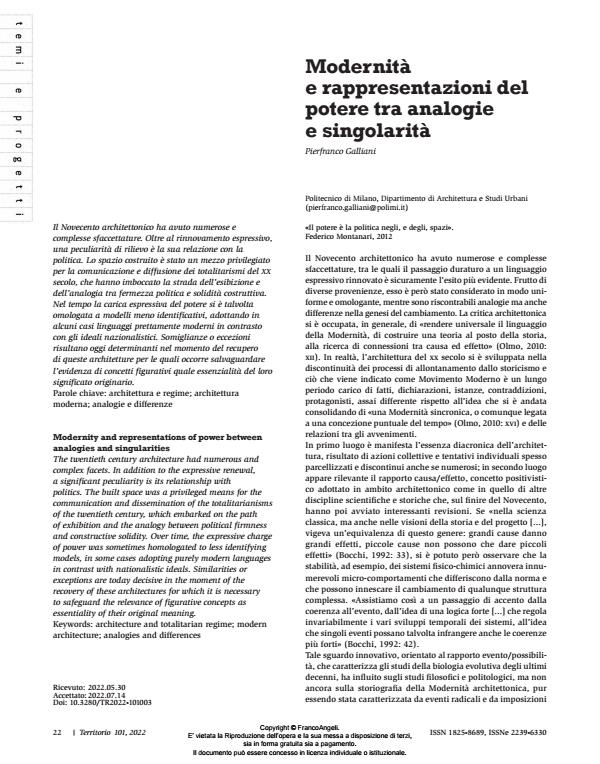Modernità e rappresentazioni del potere tra analogie e singolarità
Titolo Rivista TERRITORIO
Autori/Curatori Pierfranco Galliani
Anno di pubblicazione 2023 Fascicolo 2022/101
Lingua Italiano Numero pagine 11 P. 22-32 Dimensione file 652 KB
DOI 10.3280/TR2022-101003
Il DOI è il codice a barre della proprietà intellettuale: per saperne di più
clicca qui
Qui sotto puoi vedere in anteprima la prima pagina di questo articolo.
Se questo articolo ti interessa, lo puoi acquistare (e scaricare in formato pdf) seguendo le facili indicazioni per acquistare il download credit. Acquista Download Credits per scaricare questo Articolo in formato PDF

FrancoAngeli è membro della Publishers International Linking Association, Inc (PILA)associazione indipendente e non profit per facilitare (attraverso i servizi tecnologici implementati da CrossRef.org) l’accesso degli studiosi ai contenuti digitali nelle pubblicazioni professionali e scientifiche
Il Novecento architettonico ha avuto numerose e complesse sfaccettature. Oltre al rinnovamento espressivo, una peculiarità di rilievo è la sua relazione con la politica. Lo spazio costruito è stato un mezzo privilegiato per la comunicazione e diffusione dei totalitarismi del xx secolo, che hanno imboccato la strada dell’esibizione e dell’analogia tra fermezza politica e solidità costruttiva. Nel tempo la carica espressiva del potere si è talvolta omologata a modelli meno identificativi, adottando in alcuni casi linguaggi prettamente moderni in contrasto con gli ideali nazionalistici. Somiglianze o eccezioni risultano oggi determinanti nel momento del recupero di queste architetture per le quali occorre salvaguardare l’evidenza di concetti figurativi quale essenzialità del loro significato originario.
Parole chiave:architettura e regime; architettura moderna; analogie e differenze
Pierfranco Galliani, Modernità e rappresentazioni del potere tra analogie e singolarità in "TERRITORIO" 101/2022, pp 22-32, DOI: 10.3280/TR2022-101003